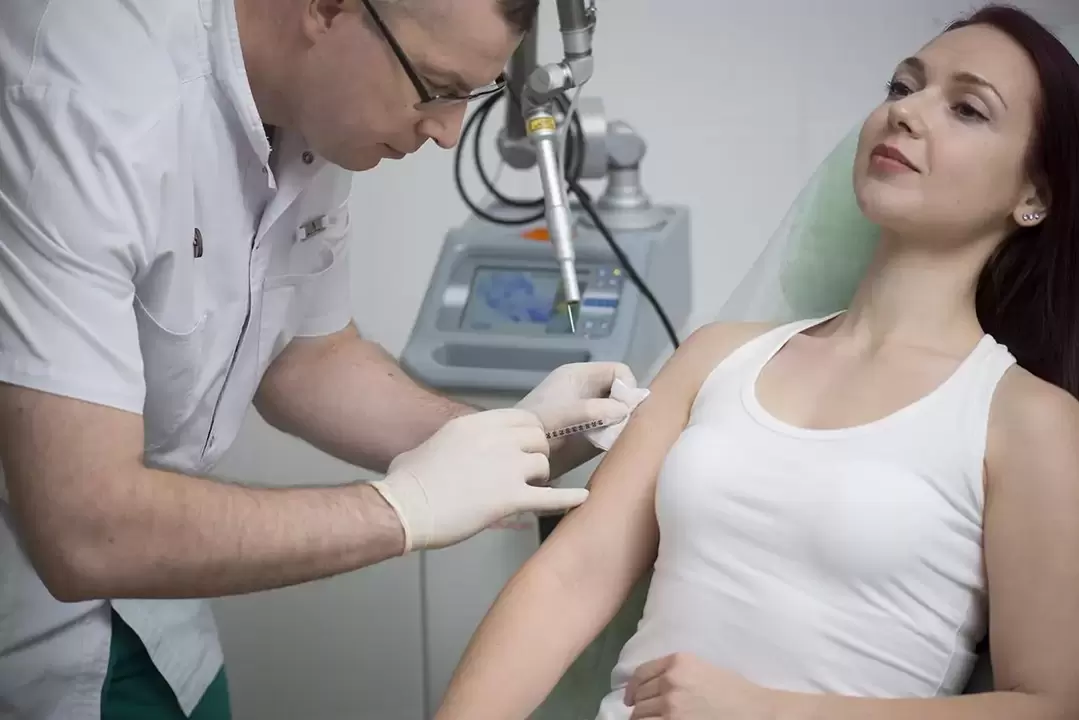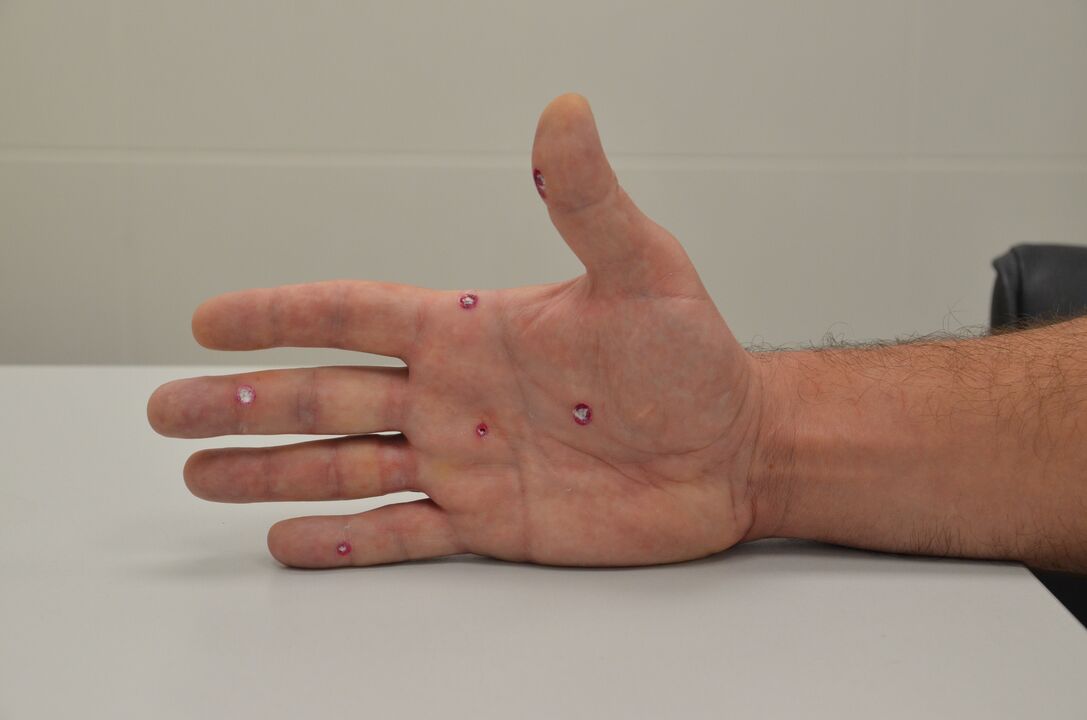important!
The information in this article is not intended to be used for self-diagnosis and self-medication. In order to make a correct diagnosis and develop a treatment plan, you should always consult a doctor.
What are warts?
I love you

Reason for occurrence
- Vitamin deficiency;
- bad habits;
- Pregnant;
- Endometriosis, etc.
I love you

Types of warts
- Common or vulgar (verrucae vulgares). The most common form, it is more common in preschool children (about 70% of cases). They are growths with a rough surface and can be several millimeters in size. May be yellowish or grey. At first, their color usually matches skin tone, but then the structure begins to darken. Over time, they can grow in size and cause great discomfort. In addition, cracks often appear around warts. It feels rough and dense, and is covered with keratinized skin. The main areas are the fingers and the back of the hands; in children, there are also growths on the knees. Often, a cluster of several small warts will form around a common wart, and the affected area will only grow larger over time. Generally, these forms are not painful, but in rare cases they disappear on their own. But in most cases, they need to be removed to prevent injury. These warts are caused by HPV types 1, 2, 4, and 7. Infection occurs through direct contact with a sick person. There are also many factors that predispose to infection: the presence of microtrauma on the skin, recent shaving, hyperhidrosis, excessive pressure on the skin from clothing or shoes. Children often become infected in schools, kindergartens or sports departments. When identifying this type of tumor, it is important to make a differential diagnosis and exclude the presence of verrucous cutaneous tuberculosis, keratoacanthoma, and many other lesions.
- Verrucae planae verrucae juveniles. It is clear from the names of these tumors that they appear in adolescence or early adulthood. They are characterized by a slight bump above the skin's surface that is rounded in color and matches the skin's tone. Keratinization is usually absent. Growths can reach 5-8 mm in size. They can be single or multiple. Located on the face, neck, and back of hands. They may disappear on their own after 1-2 years. Differential diagnosis with lichen planus and molluscum contagiosum.
- Plantar warts on the soles of the feet. As the name suggests, this is a common form that occurs on the soles of the feet. Generally speaking, this is the area of the metatarsal bone, heel, or toe ball—the area that experiences the most pressure and friction. This growth can reach large sizes - up to 2 cm in diameter. Excessive friction can cause them to splinter and cause injury. They usually have sharp edges and rough surfaces. Under the keratinized skin, dark spots - thrombosed capillaries - can often be seen. Color - yellow or brown. The cause of this growth is HPV types 1 and 4. Pathological processes can be superficial or deep-seated. In the second case, the warts cause discomfort and cause pain when walking, so they must be removed. Differential diagnosis is made through calluses and fungal skin lesions.
- Genital warts. This form of neoplasia is one of the common manifestations of HPV in the anogenital region. Genital warts are found near the genitals or anus, sometimes in the groin, armpits, near the breasts, and at the corners of the mouth. They vary in size and look a bit like cauliflower. They are flesh-colored and can have thin stems or a broad, nodular base. The growth is very "fragile" and therefore bleeds frequently. Transmitted sexually. Risk factors include sexually transmitted infections, frequent changes in sexual partners, disruption of the normal vaginal microbiota, pregnancy, and various internal factors (such as vitamin deficiencies). Another characteristic is the simultaneous appearance of multiple genital warts. In men, this structure is often mistaken for a necklace of papules on the penis. In women, this pathology may be confused with labial micropapillomatosis.
- Filiform warts. Thin keratinous growths appear on the face: nose, mouth, and around the eyes. Typically diagnosed in older patients, the base may be wider or narrower. Very prone to injury.
- Giant Buschke-Lewenstein genital warts. This is a separate type of genital warts that initially presents as a group of multiple papillomas. Typically, the growth is located in the inguinal fold or vulvar area; over time, widespread lesions can develop, encompassing adjacent tissue in the process.
- "Butcher's" wart. This is a type of common wart that appears in people who are frequently exposed to raw fish or meat. They are cauliflower-shaped tumors but are flesh-colored.
- Cystic warts. A growth on the feet that appears as soft nodes with deep cracks. When injured, white-yellow cheese-like discharge will appear.
Diagnosis of warts
Removal method
- Freezing damage. This method of wart removal involves exposing the affected area to liquid nitrogen. Controlled tissue necrosis occurs, resulting in complete removal of the existing tumor. Cryodestruction can be carried out by application (for warts up to 10 mm in diameter) and aerosol (required for warts growing deep in the tissue). Removal is complete in one visit; the process can be repeated after 1-2 weeks if necessary. This technique is used for small numbers of warts (up to 4-5 elements on average) and smaller treatment areas. The procedure is usually painless and effective, but the results depend largely on the doctor's expertise.
- Electrocoagulation. The tumor is removed layer by layer due to the effect of electric current. The technique is considered more effective than cryodestruction, but it has its drawbacks: scars often remain on the skin after removal. Therefore, this method is not used in situations where good aesthetics are important. However, with the help of electrical current, large affected areas can be removed.
- Laser destruction. One of the most effective ways to remove warts is laser therapy. This is the preferred method at our Altemed Aesthetic clinic in St. Petersburg. The growth is removed layer by layer: under the action of the laser beam, the damaged tissue is evaporated until it completely disappears. Exposure times vary from a few seconds to 2-3 minutes (depending on the size and amount of growth). This surgery can remove warts, papillomas, and genital warts without invasive effects. Since the tissue coagulates immediately under the action of the laser beam, the risk of secondary infection is eliminated. Therefore, the recovery process is quick and complication-free.
- Radio wave therapy. The technology involves the use of electromagnetic waves of a given frequency. The surgery is performed using special equipment (often a Surgitron device is used). During the exposure, the tissue heats up, so the cells that form actually evaporate (just like what happens during laser treatment).
- Chemicals. The application of salicyl patches and lactated salicyl collodion cannot be called modern treatment methods, however, in some cases this technique is still used. For example, are there any contraindications to other surgeries. Chemical removal is a complex process requiring repeated procedures and preliminary mechanical removal of the affected tissue.























